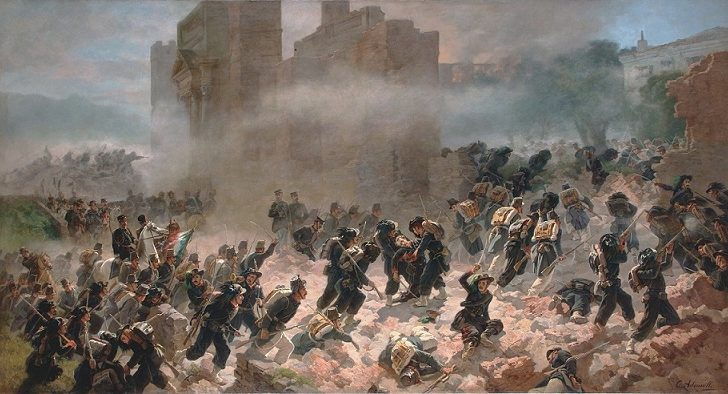The Pope who would be King: The Exile of Pius IX and the Emergence of Modern Europe
by David I. Kertzer
(Oxford University Press, £25.00)
Prof. Kertzer’s earlier books have made a mark. The Pope and Mussolini, for instance, described the settlement that lead to the Lateran Treaty and the accommodation made by the Church with Fascist Italy. Kertzer has slowly been rewriting the history of 19th Century Italy, and inevitably in these decades the role of the Vatican and the Pope have had a major place, but one which is not always shown in a favourable light.
Here he deals with the string of events which began in 1848 that led to the downfall, after 1,000 years, of the papal States in central Italy. That was a year of revolutionary actions all across Europe from Ireland to the marches of Russia. But for the Pope they meant a rising in Rome itself, which evoked in many memories of the French revolution which had cut of the head of an anointed king.
Pius IX, who on his election had been seen as a liberalising Pope, was shaken; as indeed were others, such as Ireland’s Paul Cullen, then head of the Irish College in Rome – to whom the scenes he saw gave him a lifelong aversion to republicans and democrats.
The Pope fled Rome, not to France or Austria, but to Gaeta, where he was protected by the king of the Two Sicilies, and from where he returned with reluctance. The fate of Rome, the Pope and the papal States lay less in the hands of the Pope than in those of France and Austria, and the Piedmontese intent on uniting Italy, vi et armis.
The rival ambitions of Austria, France and Piedmont manipulated the Pope as it best suited them.
The Pope, for instance, to maintain what the angry people of the papal States saw as “the rule of the priests”, welcomed the advent of the hated Austrians. Later again he welcomed the troops of the French Empire, under whom the Vatican Council opened.
When they were withdrawn at the start of the Franco-Prussian War, Rome was left open to the forces of the united Italy; democracy, Italian style, conquered from the north. The promulgation of Papal Infallibility coincided with the collapse of the thousand year realm of the Papal States. In a very real way it was the end an era, the beginning of a new Europe.
The years between that event and the passing of Pio Nono in 1878 bring the book to an end. The last part of the book is perhaps a bit rushed, but the book as a whole is written with elegant restraint. Its content, however unwelcome it may still be to some, is based (as the notes reveal) on decades of research in a multitude of printed sources and archives including the once-secret archives of the Vatican.
The author is in the happy position that he does not need to fill out unfamiliar passages to non-Italians; he can simply refer his many readers to his earlier books for all the detail they might feel the need of.
Modern day Catholics, considering these events, cannot but feel relieved that the Vatican is no longer burdened with a ramshackle feudal state. Released from such a secular burden the Popes can devote themselves, not to pressing worldly tasks, but to fulfilling their otherworldly purpose. But the Church has not yet managed to cast off the Italian mentality that governs the outlook of too many involved in the Curia. Catholics need to recall again and again that the Church does not belong to the Italians but to the world.


 Peter Costello
Peter Costello The forces of Italian unity capture Rome September 1870.
The forces of Italian unity capture Rome September 1870.